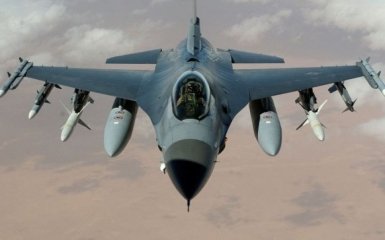NATO Air Forces conducted over 300 sorties in 2023 in response to Russia's actions. Most interceptions were over the Baltic Sea.
NATO has strengthened aviation near borders with Russia
According to NATO spokesman Dylan White, the vast majority of air encounters between NATO and Russian aircraft have been safe and professional. Violations of NATO airspace by Russian military aircraft remained rare and generally short-term.
He also added that following Russia's invasion of Ukraine, NATO allies have reinforced their air power on the eastern flank by deploying fighter jets and ground-based air defence systems.
NATO fighter jets are on standby 24 hours a day, ready to respond to suspicious or unannounced flights near our allies' airspace, White added.
NATO partners provide the Ukrainian Armed Forces with data on the takeoff of Russian aircraft
According to Colonel Yurii Ihnat, spokesman for the Air Force of the Armed Forces of Ukraine, Western partners provide the Ukrainian Armed Forces with information about the take-off of MiG-31K or strategic Russian aircraft, the deployment of Russian ships to sea, and preparations for the launch of Kalibr cruise missiles.
As for the control of maritime waters, there can be no question, as the rotation of strategic RQ-4 Global Hawk UAVs over the Black Sea, as well as aircraft such as the P-8A Poseidon in Romanian airspace, is a daily occurrence.
In particular, the Savasleyka airfield in the Nizhny Novgorod region of Russia, from where MiG-31Ks regularly take off, is almost exactly 1,000 km away, and the nearest border with NATO, Finland and Poland is 1,200 km away. From Engels, where the Tu-95 and Tu-160 are based, it is 1,200 km to the neutral waters of the Black Sea and 1,430 km to Romania.
Against this backdrop, the recording of bombers taking off from the Olenya airbase in the Murmansk region, 190 km from the Finnish border, or the Diaghilev airbase near Ryazan, 1,000 km from Poland, is no longer so surprising.
At the same time, this information also suggests that the only Russian strategic aviation base that may be out of the range of the US and its allies is Belaya in the Irkutsk region, which is 2,400 kilometres from South Korea, while Ukrainka in the Amur region is 1,200 kilometres from Japan.



